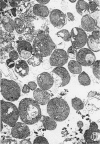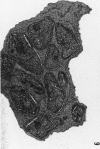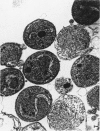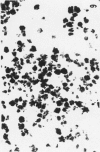Abstract
Procedures for isolation of various forms of the asexual erythrocytic stages of the human parasite Plasmodium falciparum are outlined. The procedures employ the plasma expander Physiogel, which is composed of a chemically modified, partially hydrolysed gelatin dissolved in Ringer's lactate. Based on the observation that parasitized cells which are easily separable by this technique differ appreciably at the ultrastructural level, a mechanism by which separation occurs is proposed.
Full text
PDF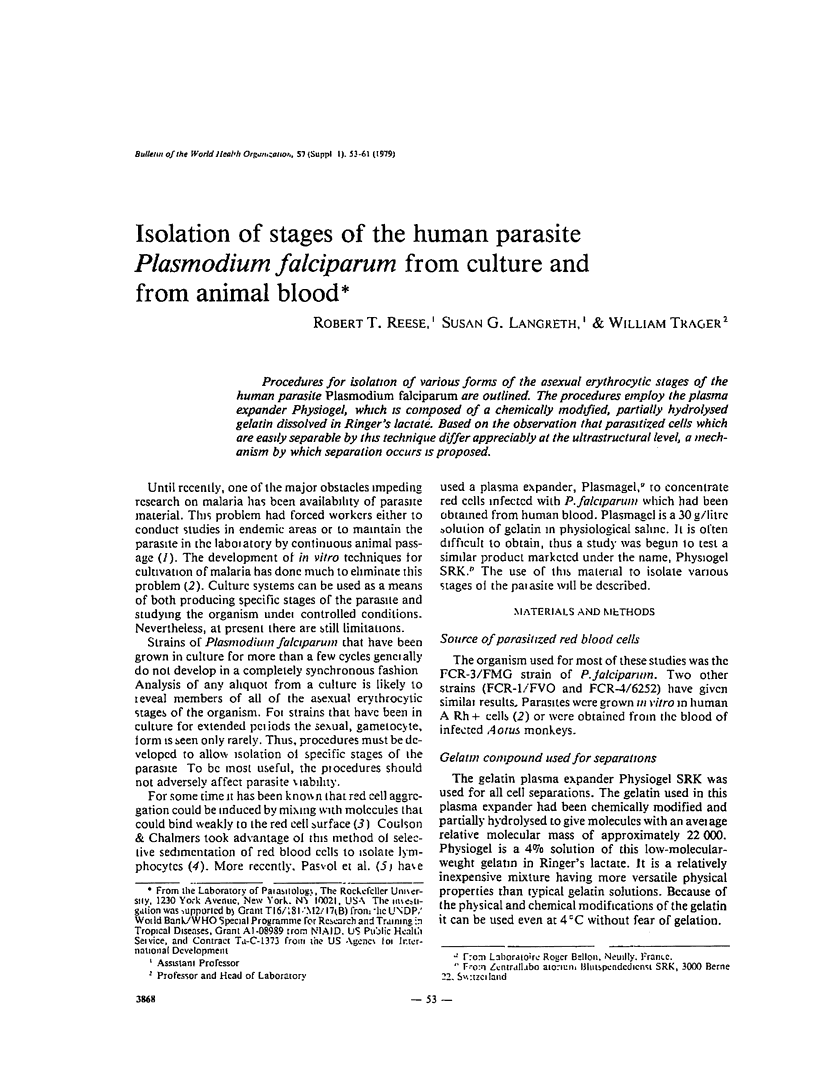
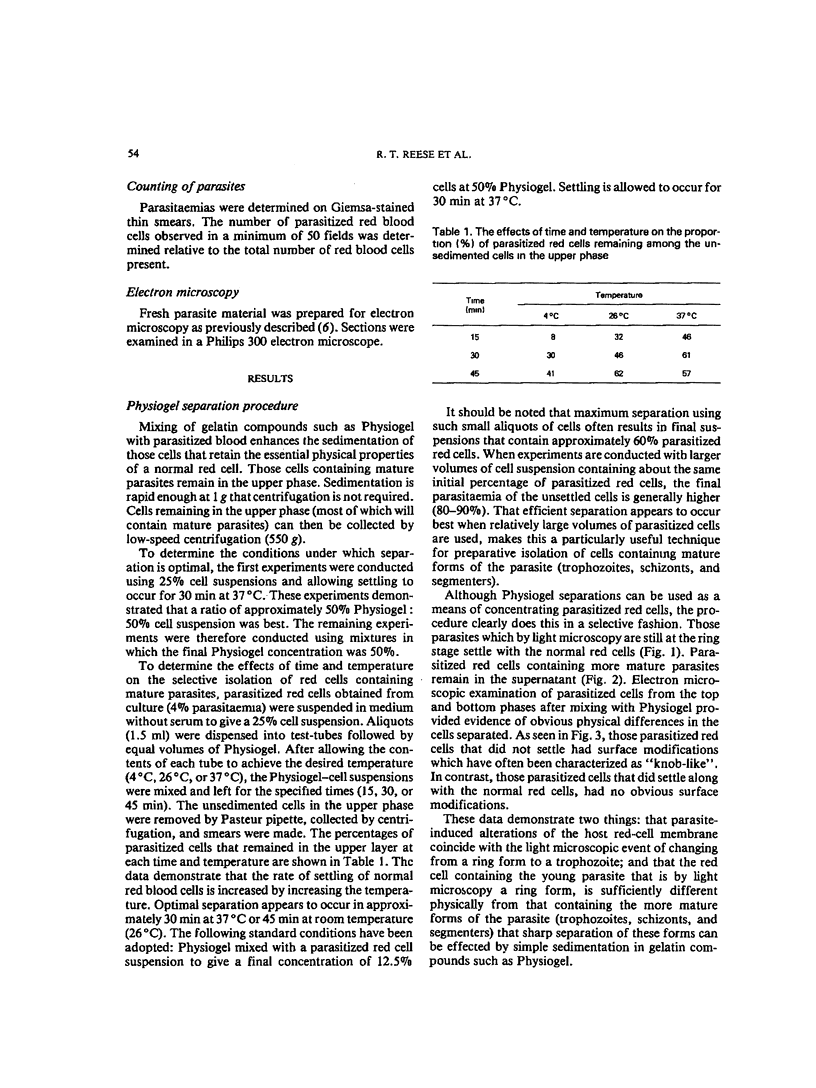
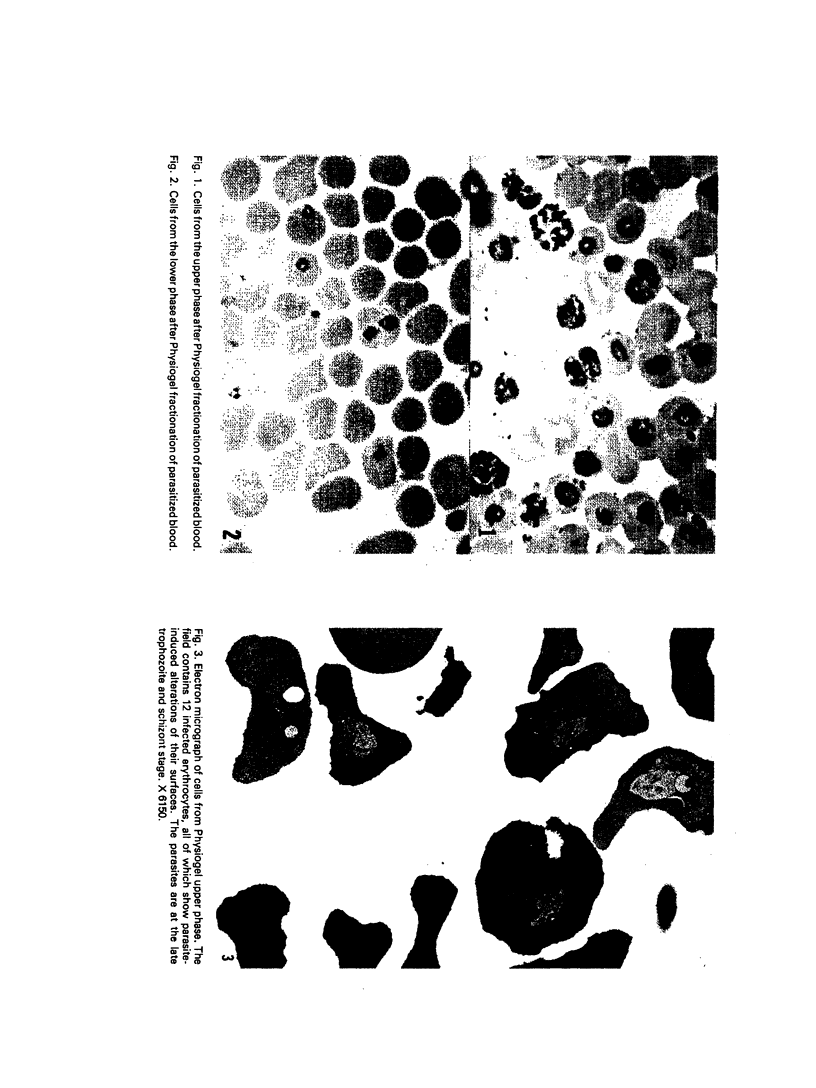
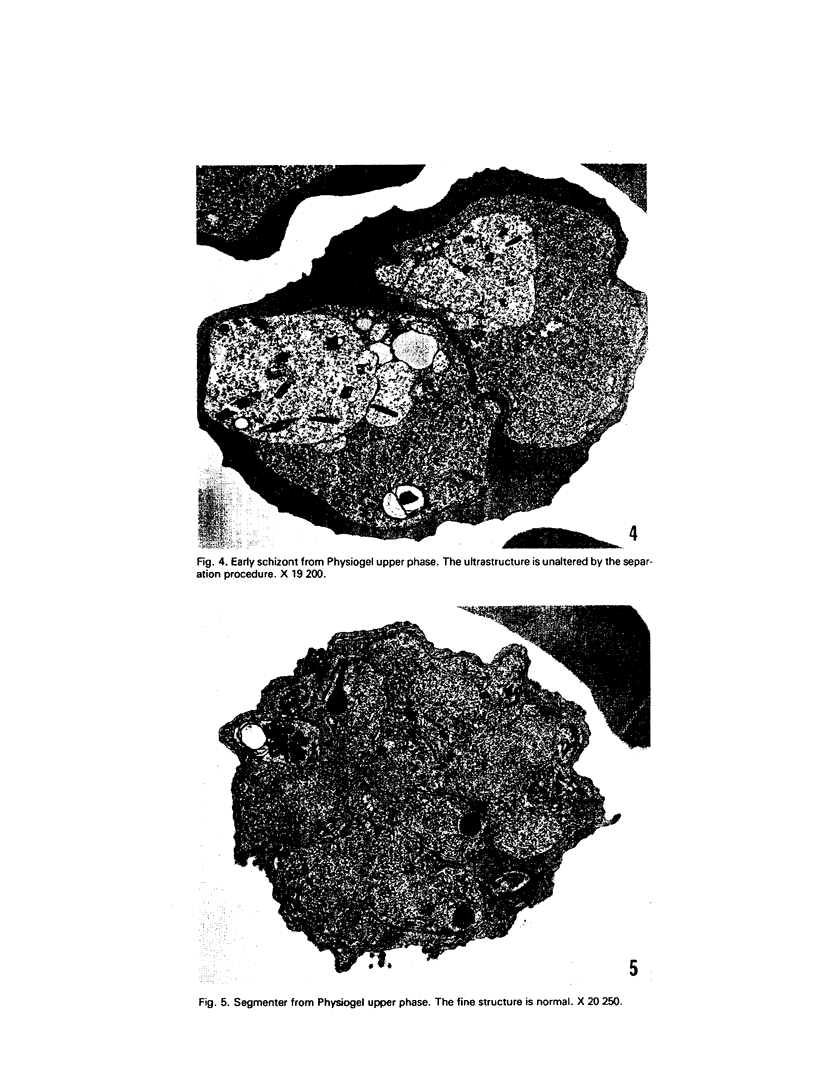
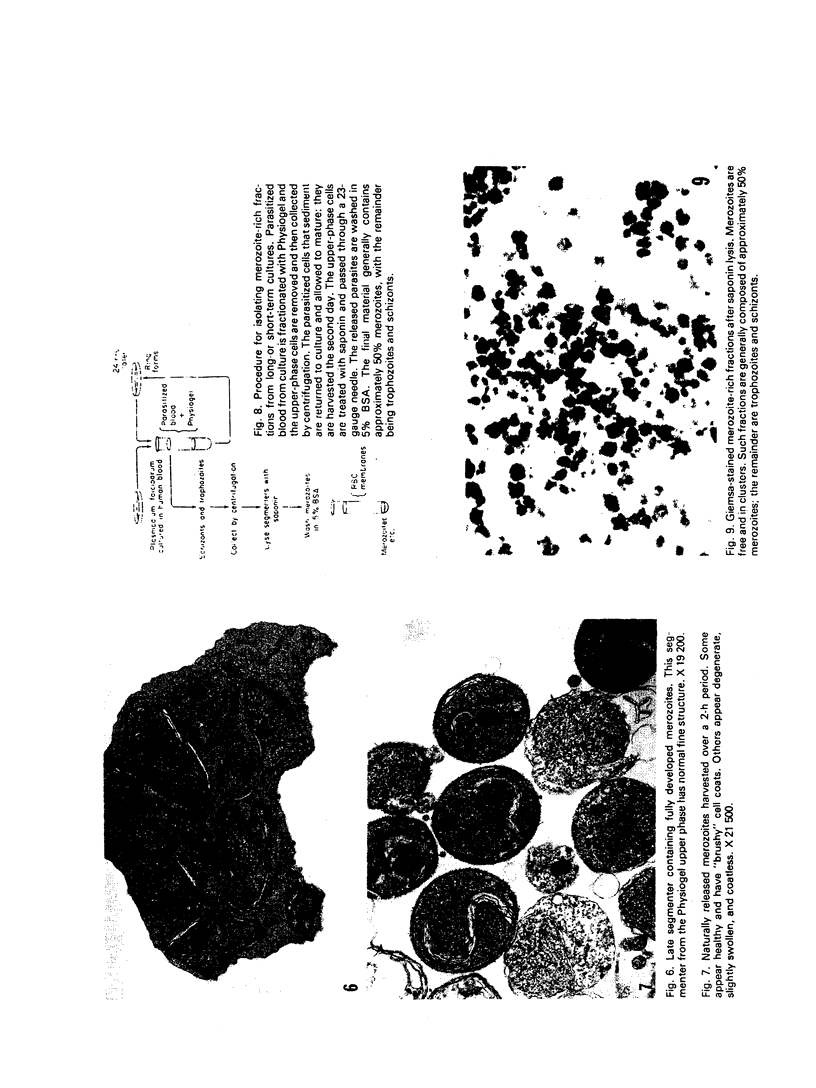
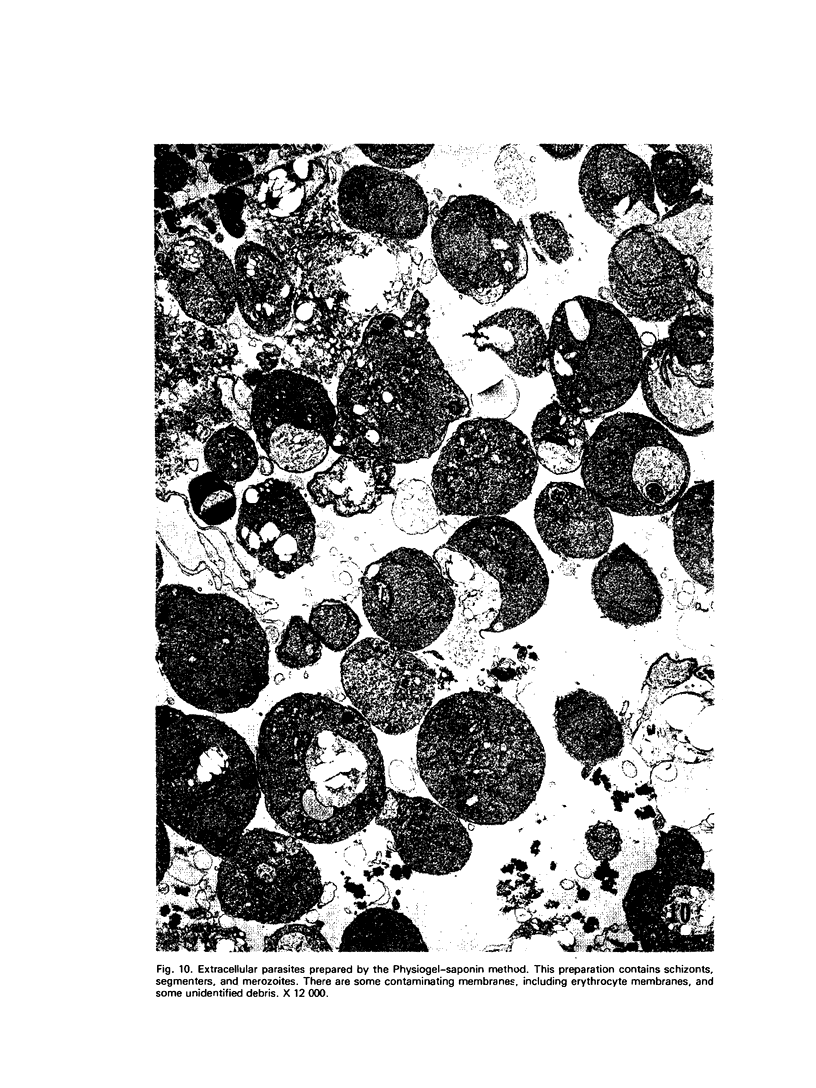
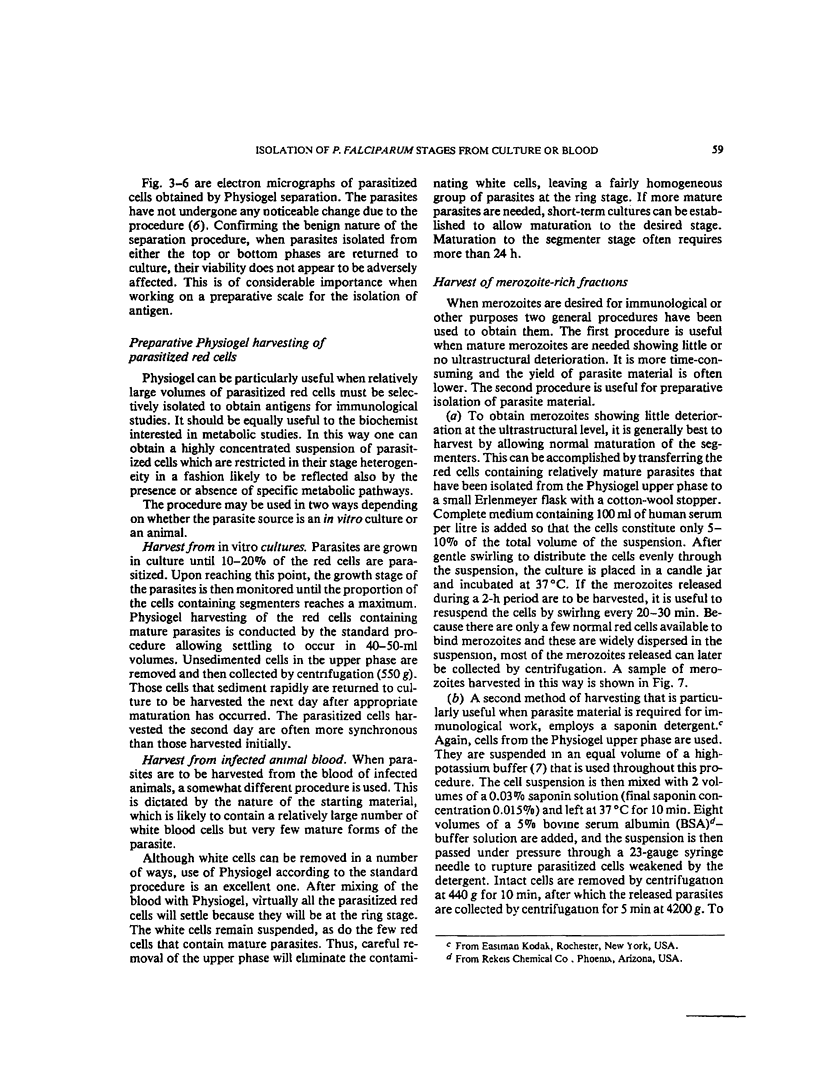
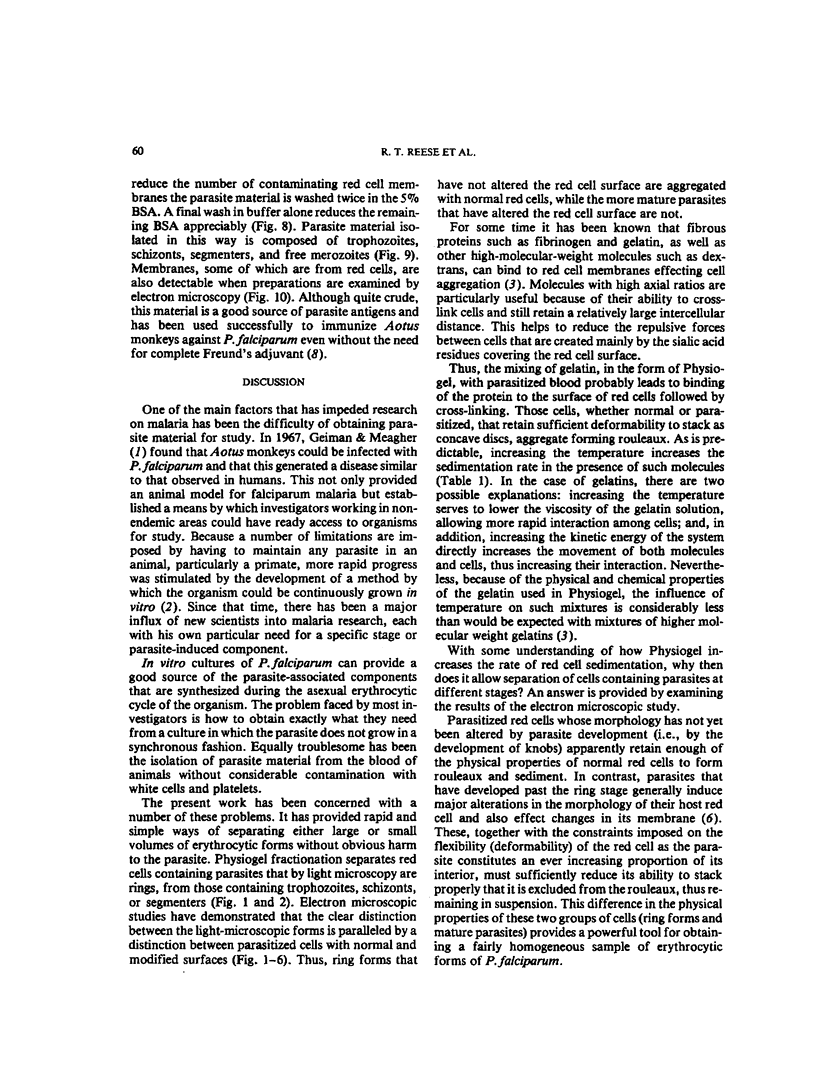
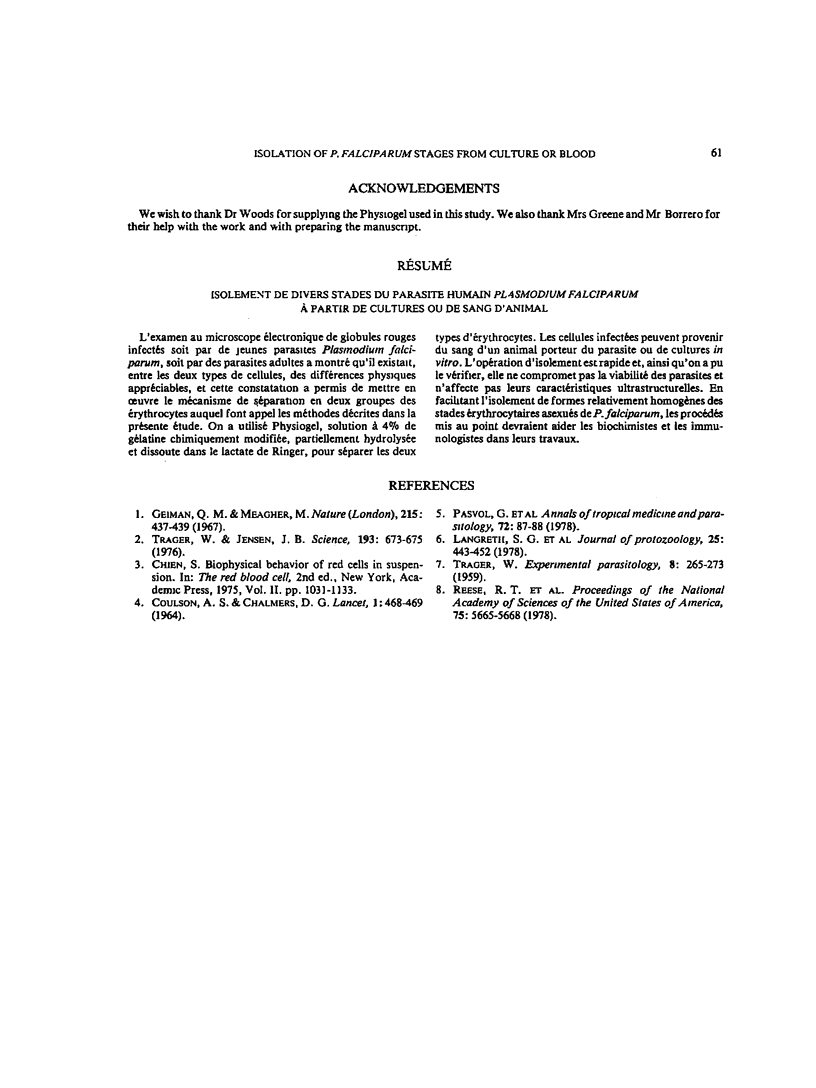
Images in this article
Selected References
These references are in PubMed. This may not be the complete list of references from this article.
- COULSON A. S., CHALMERS D. G. SEPARATION OF VIABLE LYMPHOCYTES FROM HUMAN BLOOD. Lancet. 1964 Feb 29;1(7331):468–469. doi: 10.1016/s0140-6736(64)90799-8. [DOI] [PubMed] [Google Scholar]
- Geiman Q. M., Meagher M. J. Susceptibility of a New World monkey to Plasmodium falciparum from man. Nature. 1967 Jul 22;215(5099):437–439. doi: 10.1038/215437a0. [DOI] [PubMed] [Google Scholar]
- Klinman N. R., Press J. L. The characterization fo the B-cell repertoire specific for the 2,4-dinitrophenyl and 2,4,6-trinitrophenyl determinants in neonatal BALB/c mice. J Exp Med. 1975 May 1;141(5):1133–1146. doi: 10.1084/jem.141.5.1133. [DOI] [PMC free article] [PubMed] [Google Scholar]
- Trager W., Jensen J. B. Human malaria parasites in continuous culture. Science. 1976 Aug 20;193(4254):673–675. doi: 10.1126/science.781840. [DOI] [PubMed] [Google Scholar]



